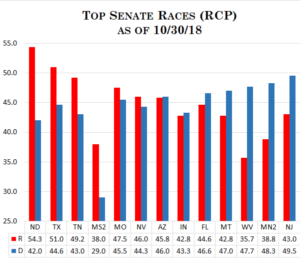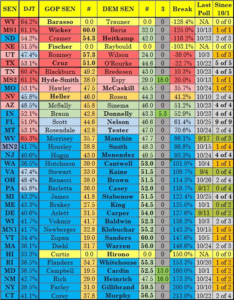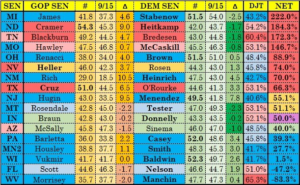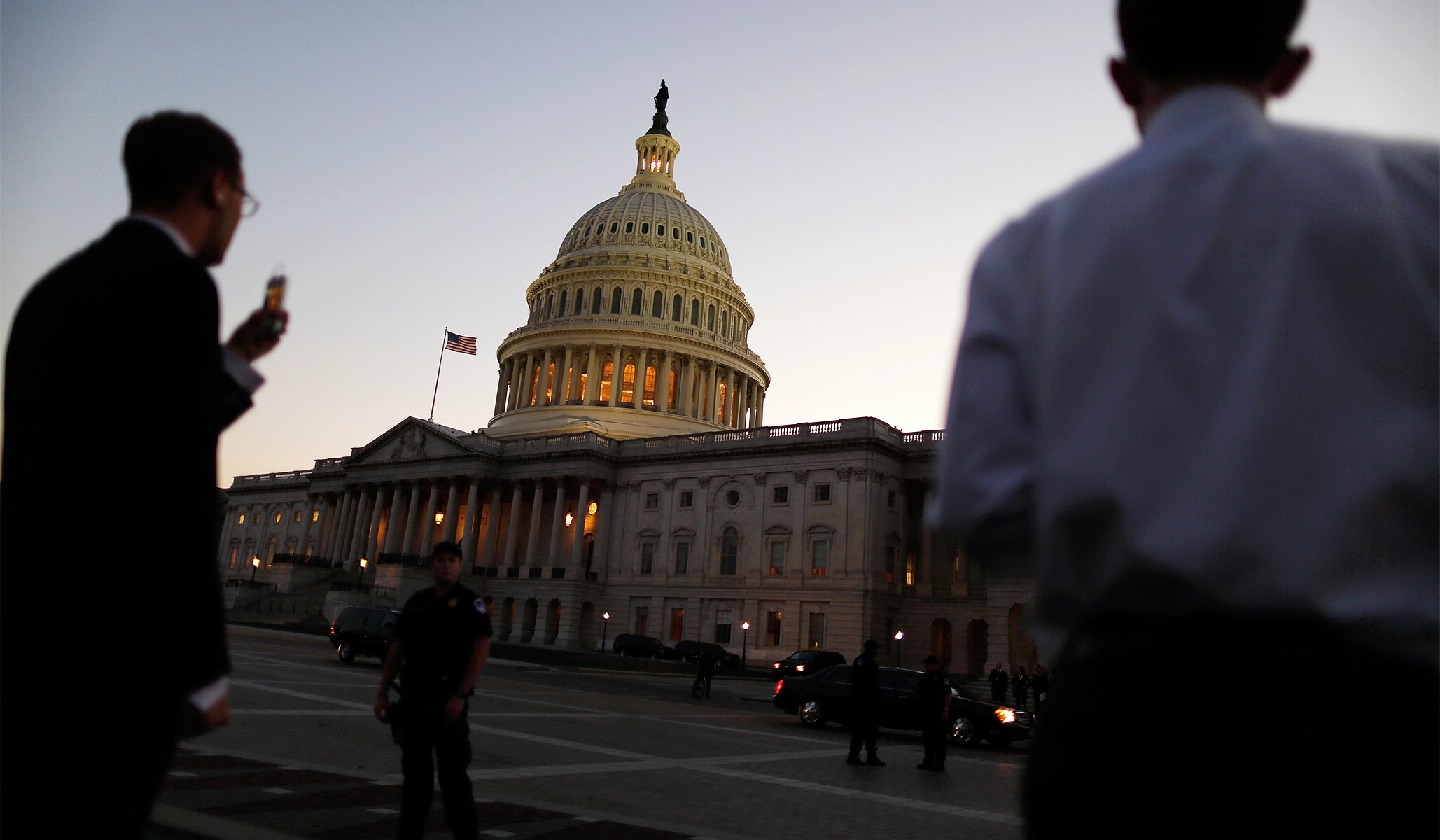By: Dan McLaughlin – nationalreview.com – October 31, 2018
I looked earlier this month at the polling in the Senate and governors’ races. But in the closing weeks of an election, the polls keep coming. With a week to go, where does the Senate stand now? The news is bad for a number of candidates in both parties; Republican control of the Senate looks fairly good right now, but the party could suffer if it doesn’t hold on to a bunch of slim leads and capitalize on key opportunities.
As I noted earlier, while public polls are far from infallible, they can tell us something about the state of a race, and there are a number of ways to test how much they can tell us, such as:
- The size of the lead;
- Whether either candidate has cleared the 50 percent barrier;
- If not, how many undecideds remain;
- How many polls have been taken in the race;
- How many of those polls are recent; and
- Where the political environment, nationally and in the particular state, stands.
In particular, I find it useful to look at how races “break” in the last six weeks, as the number of undecided voters in the polling averages dwindles.
The Senate Polls

Let’s start with the current RealClearPolitics poll averages in the Senate. Quick notes on the chart:
- The “DJT” column shows Trump’s approval rating by state according to Morning Consult’s September 2018 polling, which may not be entirely up to date; Trump’s approval rating nationally has recovered to a hair over 44 percent in October after dropping almost to 40 percent in mid September, but shows some signs of dipping back down at the last minute following the “MAGABomber” story, the Pittsburgh synagogue attack, and Trump’s characteristically ham-fisted responses to both.
- “3” indicates the polling for third-party candidates. In the Senate, this is a factor mainly in Indiana (libertarian Lucy Brenton, who has faded a bit in recent polls) and New Mexico (libertarian and former Republican governor and two-time libertarian presidential candidate Gary Johnson). In Mississippi’s special election, I listed Republican Chris McDaniel in this column, but assuming he finishes third, we’ll see a two-horse race in the November 27 runoff.
- “Break” extrapolates what percentage of the remaining undecideds would need to support the Republican candidate to get to 50 percent. As I’ve noted before, this is an imprecise measure; some races end with both sides short of 50 percent, and as even the past month shows, candidates sometimes lose support, rather than simply losing the race to gather undecideds. But as a net measurement, this helps tell us how much room there is to grow left in the poll average, and how much of that one side needs to capture to win.
- “Last poll” and “Since 10/1” look at the start date of the most recent poll in the race (most polls are conducted over multiple days) and how many of the polls in the average were begun since October 1.

This looks like a field that has sorted itself into four tiers: three almost-toss-ups (Nevada, Arizona, and Indiana); three races that are still competitive but have a distinct favorite (Missouri, Florida, and Montana); four races that are longshots (Tennessee, West Virginia, Minnesota special, and New Jersey); and maybe four more where the underdog is left arguing “the only poll that matters is on Election Day” (Texas, North Dakota, Michigan, and Wisconsin). Nobody is really even able to pretend that the Mississippi special election will be resolved on Election Day, or that races such as Ohio, Pennsylvania, and Virginia are still in any doubt (even the latest Ohio poll, showing a race narrowed to 49–43, suggests only less of a rout given the remainder of the polling).
Besides the poll averages, we can also consider the trendline of how the poll average trends have broken since September 15. The “Net” column shows what percentage of the undecideds have broken to the Republican since then, which in some cases is above 100 percent or below zero if some candidates have actually lost support. I’ve only listed here the races where there were polls both before and after September 15 and neither candidate was above 53 percent, since trends in those races are pointless and often show movement against the leader.

Four races — Arizona, Indiana, Montana, and New Jersey — have, despite some movement, ended up not far from where they were six weeks ago, which is especially bad news for trailing candidates such as Bob Hugin in New Jersey and Matt Rosendale in Montana. But most of the others have banked one way or the other, and a lot more races moved in the Republican than the Democratic direction, the opposite of what the national political environment would have predicted, but perhaps more consistent with a rise in President Trump’s approval rating.
Let’s look a bit deeper at the races, and trends, by tier.
Tier One: The Toss-ups: The good news for Republicans is that Dean Heller has led in the poll average since late September; Martha McSally surged into a lead in early October as Republicans pummeled Kyrsten Sinema with ads featuring her left-wing anti-war past and her evident contempt for her own state; and recent polls have shown the Indiana race tightening as Brenton fades. But we should take this optimism with some grains of salt. Nevada and Indiana are both famously hard states to poll — Indiana due to legal restrictions on unsolicited phone calls, Nevada because of the demographics and working hours of its population, especially Las Vegas’s Hispanic-immigrant hotel and casino workers. Democrats have often outperformed their poll numbers in Nevada by one to two points, and that could be enough to erase Heller’s slight lead, which was last polled almost three weeks ago.
In Arizona, Sinema has surged in the last two polls, opening a six-point lead in the last NBC/Marist poll (Also the Green-party candidate could matter: NBC/Marist showed Sinema up 50–44 in a two-way race but 47–44–6 in a three-way race.).
Indiana is the only one of the three where Trump remains popular, though Republicans on the whole are faring better in the Southwest than the Midwest at the moment. Republicans need to win at least one of these three races to have a decent Senate cycle and two for a good one, but they shouldn’t get too comfortable.
Tier Two: The Leaners: […]
Tier Three: The Long Shots: […]
Tier Four: The “Forget Polls” Races: […]
To see the remainder of this article, click read more.
Source: Senate Races Break Down — Republicans Should Maintain Control
 Listen Online
Listen Online Watch Online
Watch Online Find a Station in Your Area
Find a Station in Your Area







 Listen Now
Listen Now Watch Online
Watch Online
